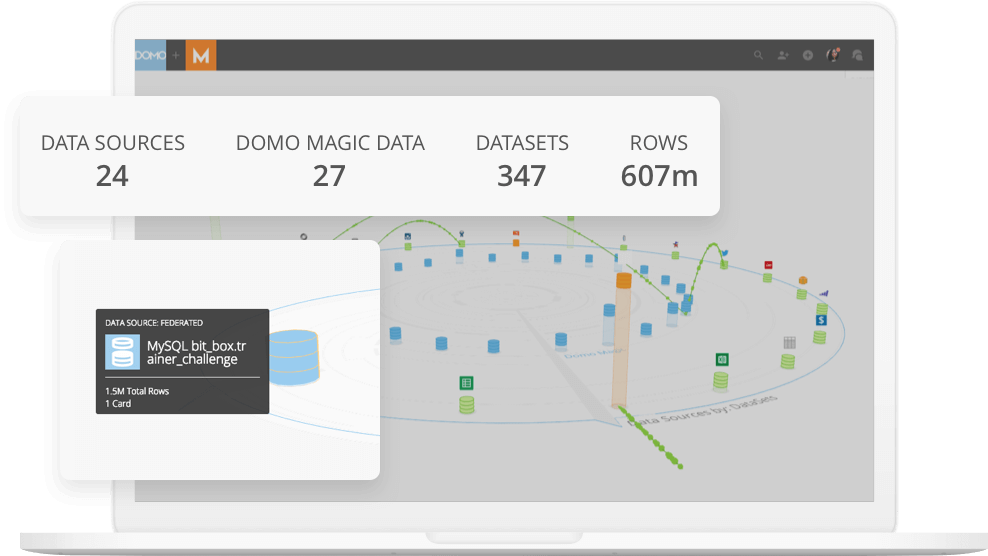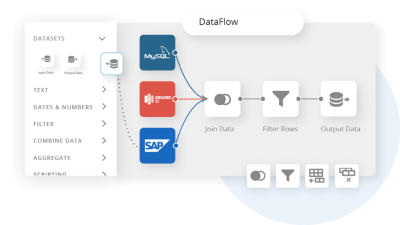Data Integration Solutions: The key to a successful operation
The world is changing. Technology has become an integral part of our lives, and with it comes the need for data integration solutions.
Data integration solutions are necessary to make sure that data from various systems can be analyzed in one place, allowing businesses to get a more complete picture of their customers and improve customer service by providing relevant information at all times.
Read on to learn more about data integration solutions and how they can benefit your business.

What are data integration solutions?
Data integration solutions are software programs that allow businesses to combine data from different sources into a single repository.
Data integration solutions can be beneficial for every business that has different systems containing data points that need to be brought together to get an accurate picture of key business metrics and operations. These solutions create a single view of the entire business which information can be used to answer questions or present relevant materials.
When companies take advantage of data integration solutions, they can improve their bottom line. Data integration allows businesses to use all of the data at their disposal to make informed business decisions.
How do data integration solutions work?
Data integration solutions work by extracting data from the various stored systems and loading it into a central repository. The data can then be analyzed and used to improve business processes.
There are two main types of data integration solutions: moving data between systems and connecting to existing data sources. The former is often used when businesses want to transfer data from one system to another, while the latter is used when businesses want to keep their data in its original format or even in its original location using federated connections.
To be successful with a data integration solution, you should start by identifying the data sources available for integration. Next, you can connect to those sources using a variety of methods. Finally, you can transform and visualize the data to get a complete picture of your business.
There are several components involved in this process:
1. Data profiling
Data profiling tools identify the information within an existing system and store it in a central repository. This allows businesses to see all of their data in a single place.
2. Data cleansing
Data cleansing tools remove inaccuracies and inconsistencies from data, ensuring that it is clean and ready for use.
3. Data transformation
Data transformation tools make it possible for you to combine data from multiple sources into a single repository. This allows businesses to analyze the data and make informed decisions.
4. Data mining
Data mining tools allow businesses to find trends and patterns in their data. Teams can use this to improve business processes or identify new opportunities.
Across the data lifecycle, data integration solutions are critical for maintaining data quality and making the most of every piece of available information.

Why are data integration solutions necessary?
Data integration solutions are essential because they allow businesses to complete the full customer circle, creating a true 360-degree view of customers that anyone can use for more accurate analysis and business decision making.
By integrating existing data sources into one central repository, data integration solutions allow businesses to get more value from their data. Companies can use this to improve business processes, find new opportunities, and make more informed decisions.
Data integration solutions are also important for maintaining data quality. By integrating data from multiple sources, data integration solutions ensure that all of the data is clean and consistent. This helps to provide the following benefits:
Improved efficiency: Data integration solutions improve efficiency by allowing businesses to make better decisions based on a complete view of the customer or client.
Better decision-making: Data integration solutions help with decision-making by providing accurate and up-to-date information to the people who need it.
360-degree view of the business: Data integration solutions give businesses a comprehensive view of their operations, not just individual departments or channels.
More innovation: Data integration solutions help businesses innovate by experimenting with new data and analyzing it in new ways.
Better communication: Data integration solutions improve communication by making sure everyone has access to the same data.
Improved accuracy: Data integration solutions improve accuracy by ensuring that data is consistent across different systems.
Ease of use: Data integration solutions require few resources to set up and manage once you have the right tools and platforms.
Scalability: Data integration solutions are scalable, so they can be used across multiple channels and work in tandem with existing data.
Flexibility: Data integration solutions are flexible because enterprises can customize them to meet specific needs or integrate with other systems.

Real-world data integration solutions use cases
Data integration solutions are used for a wide range of businesses:
1. Retail: Data integration solutions allow retailers to keep track of stock, prices, and customer behavior. Stores and management can also use them to personalize the shopping experience for individual customers.
2. Customer service: Data integration solutions improve customer service by providing relevant information and personalized services.
3. Banking: Data integration solutions help banks monitor financial transactions and flag fraudulent activity so that they can reduce risk and increase security.
4. Government: Governments use data integration solutions to better understand how departments interact and serve their citizens.
5. Technology: Many major technology companies use data integration solutions to help them develop new applications, improve existing software, and deploy bug fixes faster.
6. Telecommunications: Data integration solutions are used extensively in telecommunications to keep track of customer behavior, target advertisements, sell products and services, and understand network traffic.
7. Travel: Travel companies use data integration solutions to keep track of customer behavior, plan trips, and personalize the experience for each customer.
8. Manufacturing: Data integration solutions are used in manufacturing to improve production efficiency, reduce waste, and create new products.
9. Healthcare: Data integration solutions are used widely in healthcare to improve patient care, including data from electronic medical records, devices connected to the Internet of things, and pharmaceutical supply chains.
10. Utilities: Data integration solutions provide utilities with information about available resources and businesses’ energy usage. This helps them keep the lights on and avoid blackouts.
Conclusion
Companies that wish to maintain a competitive edge in their respective industries must prioritize data integration. A modern BI platform like Domo can be an ideal data integration solution. With an extensive library of cloud connectors, drag-and-drop ETL tools, and rich dashboarding functionality, Domo gives users all the tools they need to make more informed, data driven decisions.
Data integration solutions provide businesses with the tools to make better decisions, improve customer service, and drive innovation. With modern data innovations, these solutions are easy to use and scalable, making them an essential part of any business’ operations.
Check out some related resources:

11 ETL tools to consider in 2025

Upgrade Your Finance Ops: Measuring Financial Health in 2024 with NetSuite and Domo






